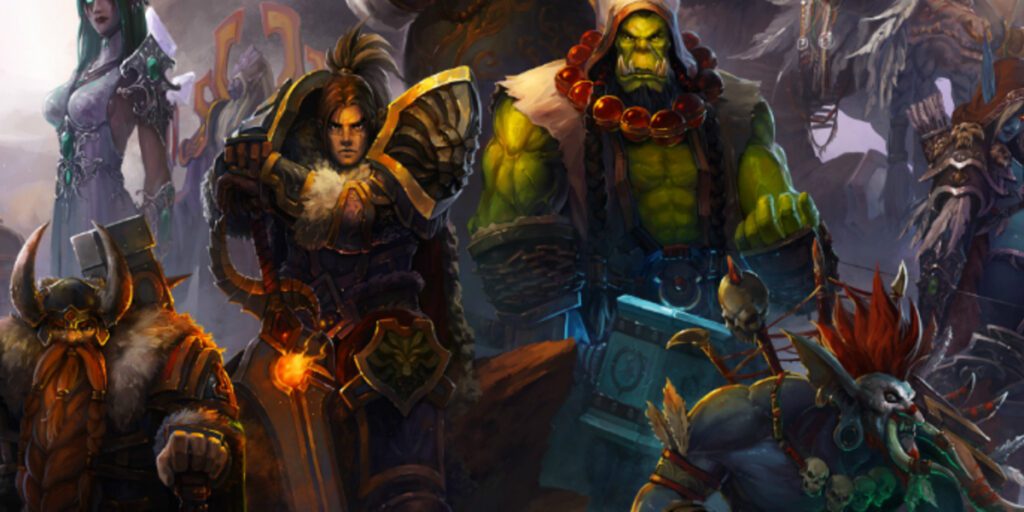World of Warcraft (WoW) is a popular massively multiplayer online role-playing game (MMORPG) developed by Blizzard Entertainment. Since its release in 2004, WoW has undergone numerous expansions and updates, making it one of the most popular and enduring games of its kind with millions of active players. In this article, the evolution of WoW is traced from its early days, launch and vanilla WoW (2004-2006), through to its latest expansion Battle for Azeroth (2018). WoW has undergone numerous changes and updates, giving players a constantly evolving gaming experience, and remains one of the most popular games in the world.
Introduction
World of Warcraft (WoW) is an incredibly popular massively multiplayer online role-playing game (MMORPG) that has millions of active players today. Developed by Blizzard Entertainment, WoW was first launched in 2004 and since then, it’s undergone numerous expansions and updates, making it one of the most popular and enduring games of its kind.
In this article, we’ll be taking a detailed look at the evolution of WoW, tracing its history from its beginnings up to the present day.
The Early Days: Launch and Vanilla WoW (2004-2006)
When WoW first launched in 2004, it took the gaming world by storm. It was seen as a revolutionary game, one that set a new standard for MMORPGs. The world of Azeroth was massive and immersive, and players could interact with it in ways that were unprecedented at the time.
In those early days of WoW, the game had just two factions – the Alliance and the Horde – and players could choose one of eight races to play as. The game was heavily focused on leveling and social interaction, with players forming guilds to tackle tough quests and bosses together.
The game’s first major content patch, released in 2005, added several new dungeons and a new battleground, as well as new PvP rewards for players.
Burning Crusade (2007)
In 2007, Blizzard released the first expansion for WoW – Burning Crusade. This expansion introduced a new continent, Outland, as well as two new playable races – the Blood Elves and the Draenei.
Burning Crusade also introduced a new level cap of 70, as well as many new features such as flying mounts, arena PvP, and new raid and dungeon content.
Wrath of the Lich King (2008)
Wrath of the Lich King (WotLK), released in 2008, was the second expansion for WoW. It introduced a new continent, Northrend, and a new playable class – the Death Knight.
WotLK also made several changes to the game’s mechanics, including the introduction of the achievement system, which rewarded players for completing certain in-game tasks.
Cataclysm (2010)
Cataclysm, released in 2010, was the third expansion for WoW. It introduced sweeping changes to the game’s world, including a complete overhaul of the old world zones, and introduced two new playable races – the Worgen and the Goblin.
The expansion also introduced the concept of “phasing”, which allowed the game’s world to change depending on a player’s progress in certain quests.
Mists of Pandaria (2012)
Mists of Pandaria, released in 2012, was the fourth expansion for WoW. It introduced a new continent, Pandaria, and a new playable race – the Pandaren.
Mists of Pandaria also introduced a new feature called “scenarios”, which were short, story-driven instances for groups of players.
Warlords of Draenor (2014)
Warlords of Draenor, released in 2014, was the fifth expansion for WoW. It introduced a new continent, Draenor, and a new playable race – the Draenei. The expansion also increased the level cap to 100.
Warlords of Draenor also made significant changes to the game’s mechanics, including the introduction of garrisons, which allowed players to construct and manage their own personal base.
Legion (2016)
Legion, released in 2016, was the sixth expansion for WoW. It introduced a new continent, the Broken Isles, and a new playable class – the Demon Hunter.
Legion also introduced the concept of “artifact weapons”, powerful weapons that players could earn and upgrade throughout the expansion.
Battle for Azeroth (2018)
The latest expansion for WoW, Battle for Azeroth, was released in 2018. It introduced two new continents, Kul Tiras and Zandalar, and a new allied race system, which allowed players to earn new playable races through in-game achievements.
Battle for Azeroth also brought significant changes to the game’s mechanics, including a new leveling system that allowed players to level up in any zone they wanted.
Conclusion
Over the years, WoW has undergone numerous changes and updates, giving players a constantly evolving gaming experience. With engaging gameplay, immersive storytelling, and a supportive player community, WoW has become one of the most iconic MMORPGs of all time.
Today, WoW remains one of the most popular games in the world, with millions of active players continuing to explore the world of Azeroth and all its varied content. And with new expansions and updates on the horizon, the future of WoW looks bright.
